Saturday, 11 October: Our tour to Segesta, Erice and the Salt Flats of Trapani
A slightly early hustle was required today as we needed to be at the tour bus taking us to Segesta at 8:10 and the pick up point was Teatro Politeama 30-35 minutes away on foot! We were first to arrive of course, probably 25 minutes early! We met our driver Giacomo, James in Italian so he and Jim hit it off quite well, and our tour guide, Roberto. Roberto was good with English; Giacomo not so much. Both great guys to have on the trip.
The route from Palermo to Segesta and if headed further, Trapani and Marsala, follows the Northern coast of Sicily to the West, offset from the shoreline by about a mile. Beautiful countryside, complete with farms, olive and citrus tree groves and vineyards all the way and accented by the blue water of the Tyrrhenian Sea to the North.
We arrived at the entrance to the Archaeological Park of Segesta at 9:30. To enhance our motivation to tour and study the park, there just up the hill from the entrance was the “Great Temple” or the “Temple of Segesta” constructed back in the 5th Century BC in the Doric style. Within just a few minutes of entering, we jumped on a park bus that took us up to the highest point in the park and furthest from the entrance – saved us a good 25 minute hike, all uphill!
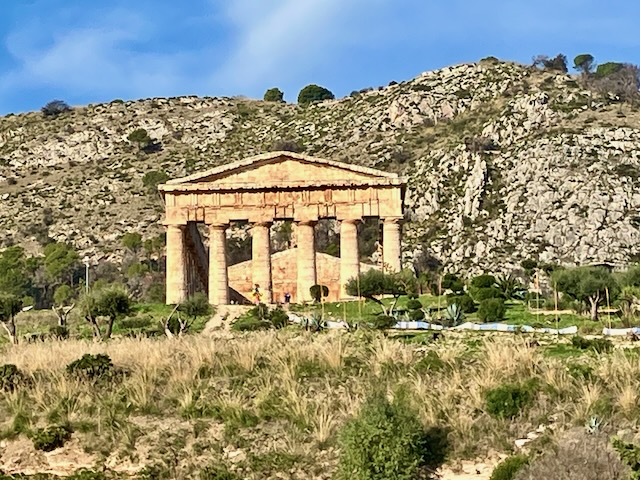
At this end of the park is the Theater of Segesta which sits on the peak of Mount Barbaro. Yes, the bus got us up most of the way but we still had quite an uphill hike to reach the theater and the fortress ruins above the theater. The theater was built in the 3rd Century BC and seats even today about 4,000 guests. Various types of entertainment are presented in the theater. It is considered one of the most beautiful examples of theater from the classical period and its state of preservation is said to be excellent
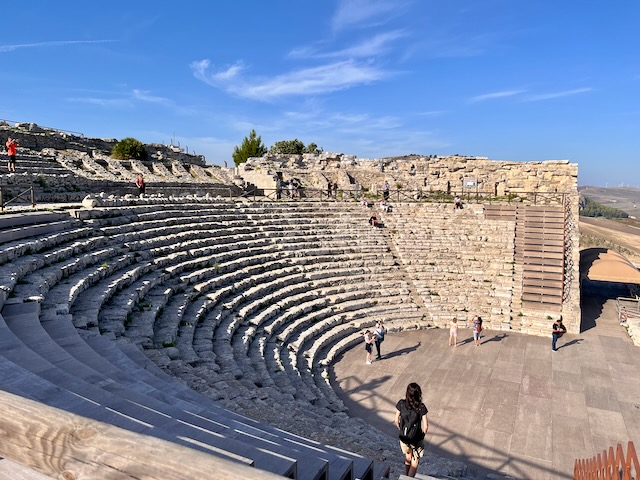
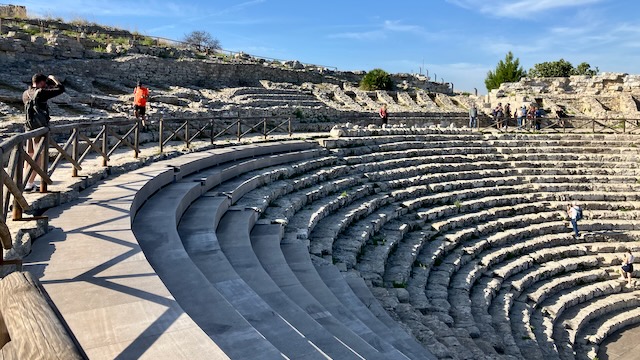
As an aside, the view from up there on Mount Barbaro is amazing. I can’t help but be happy to have a lot of Sicilian blood running through me!
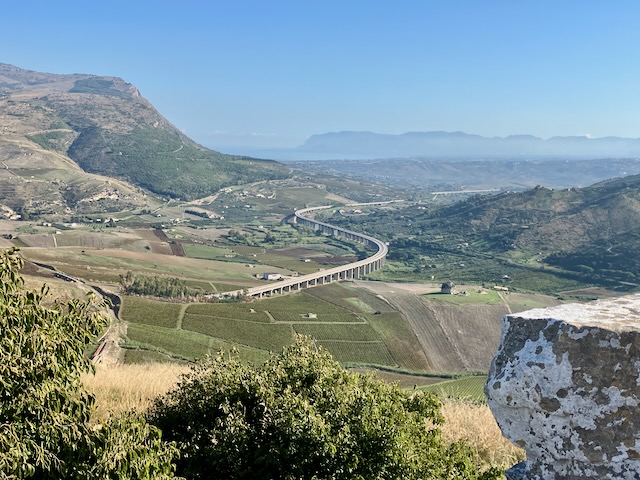
As you will see from the pictures, most of the ruins are like low walls and piles of rocks (no intention to denigrate the excavation and preservation efforts of the scholars.) We were a little disappointed that there weren’t more larger ruins or structures like we had seen in the Valley of the Temples over in Agrigento. But you’ll have to admit, this was an amazing site. What is really amazing is that the archaeologists and historians can figure out what structures were above these “piles of rock” and also who owned the structures!

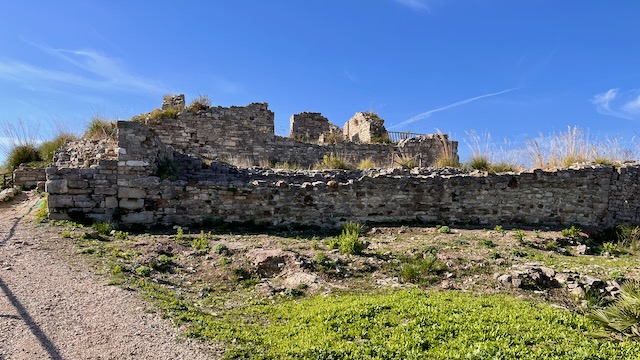
Oh, another factoid we had read while studying Segesta and Erice. Apparently wheat growing wild was discovered here and whether natural or planted, the stuff we saw was wheat and looked to be harvestable and subsequently eatable!

We opted to ride the bus back down the hill and are glad we did. The ride gave us some pretty nice angles to photograph the temple.
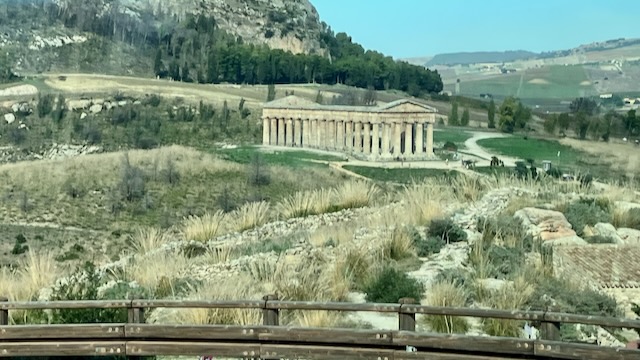
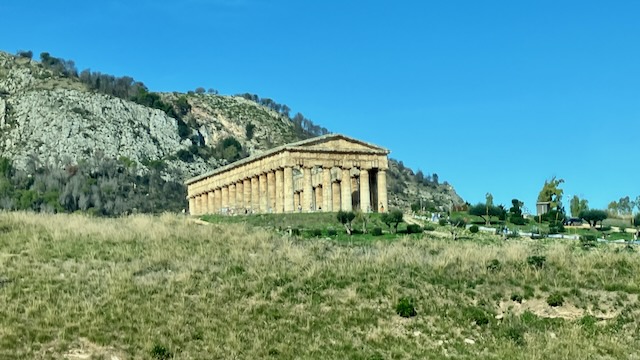
The Tempio della Concordia, or Temple of Concordia, over in the Valley of the Temples, a photo of which you can see in our 2022 blog, is slightly smaller than this one but has some internal structures which this one does not. Our Juli would have to explain the significance but the Concordia temple has 13 pillars down each side while this one has 14. Each have six across the narrow ends.
Once back at the park entrance, we began another uphill trek, this time to the temple. By this time of the day, we were faced with our nemesis – more tourists! Still, we did well in capturing various views of the temple. As mentioned earlier, seeing these ancient buildings is a highlight of this trip to Italy.
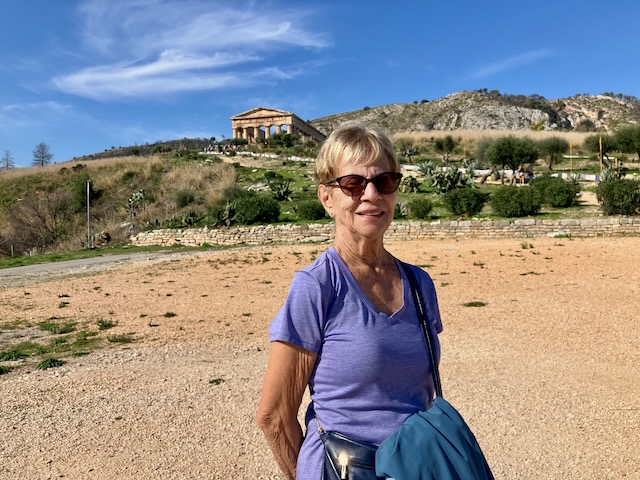
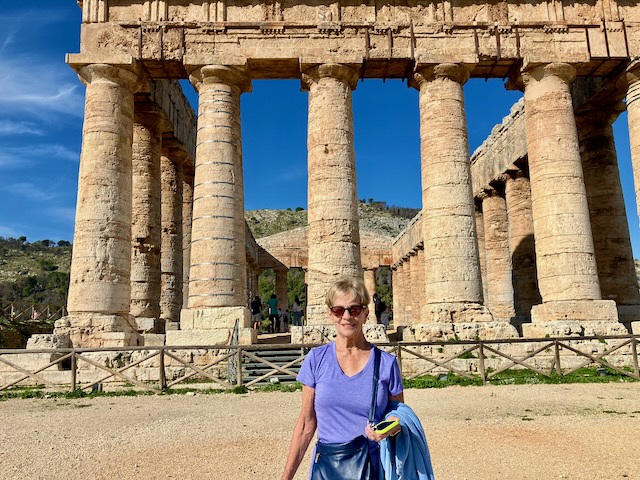
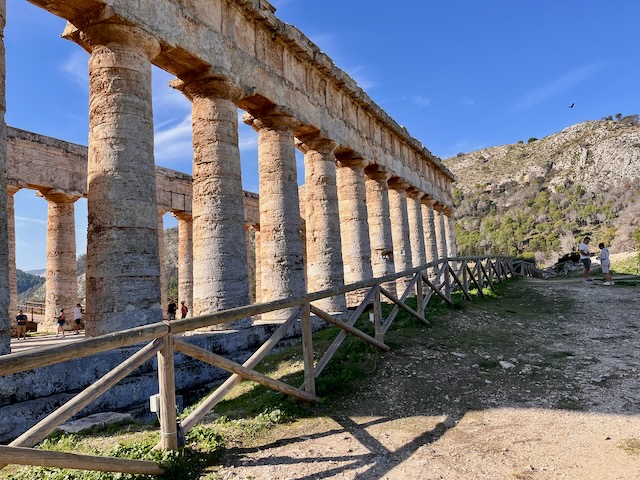


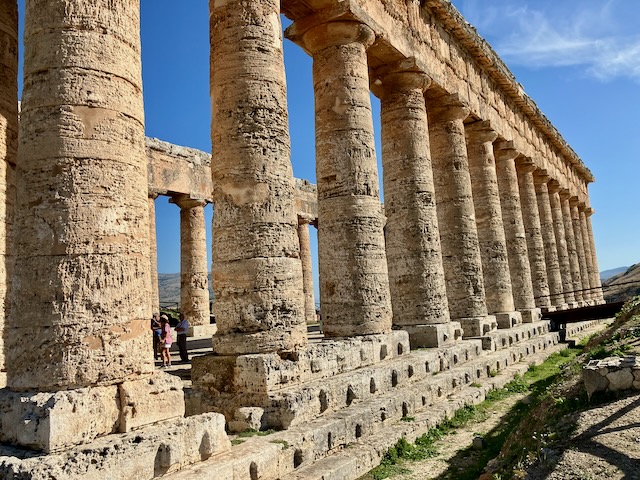
At 11:30, we loaded up in the tour bus and headed off to Erice. The trip takes you about 30 minutes further away from Palermo and includes some winding roads with many switchbacks to get to the top. The views though were awesome, looking out and down over the sea. Erice is 751 meters, or 2,500 feet, above sea level – pretty high and very defensible. If we were to come here again, I think we would take a bus or the train to Trapani and take the funivia or cable car up to the town, now that we have seen the views from the road!
We arrived at Porta Trapani (Trapani door or gate – actually a stone archway) where Roberto told us we were on our own but to be back to the gate at 2:00 PM. I should mention that although he offered comments and pointed out some sites on the trip, he made it clear he was more of an escort and not a tour guide.
We have learned that the town goes back to the 8th century BC and has been occupied by the Elymians, the Phoenicians, the Carthaginians, the Romans, the Normans, the Spanish and probably more given the attractive position of Sicily in general sitting there in the Mediterranean Sea.
As you’ll see in the first photo, from that porta, it was all uphill. Another comment: most of the streets and sidewalks in these towns, including Erice, are made of what we’d call cobblestones although in some places they are foot square or even 12×18″ blocks of a kind of marble which after all these years, are pretty darn smooth. It’s something to think about (especially as ‘seniors’) especially if there has been some mist or rain. Definitely a fall hazard if you are not very careful. It’s been dry for us for most of the trip but when we got to Erice with its steep roads, we were extra careful.
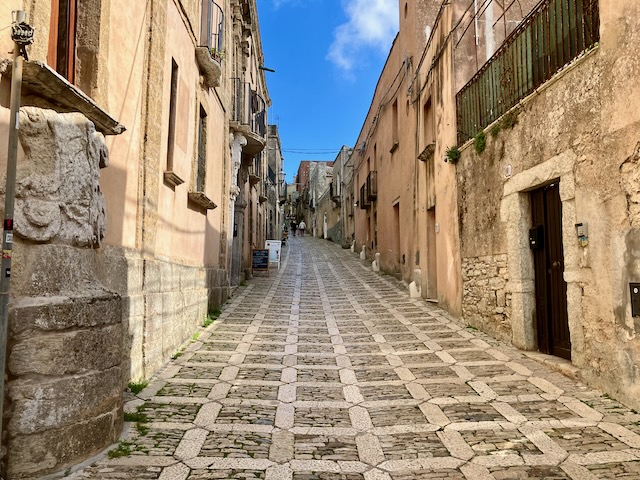
We walked around the town, visited a church or two, checked out the castle, took in some views and then looked for a restaurant so after the many hours of hiking around ruins and old towns, we could relax at lunch. We stopped in to the Hotel Elimo with its Ristorante Panoramico for our pranzo.
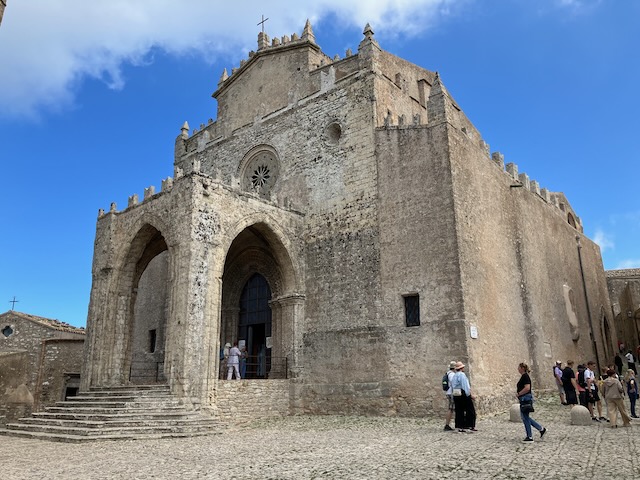
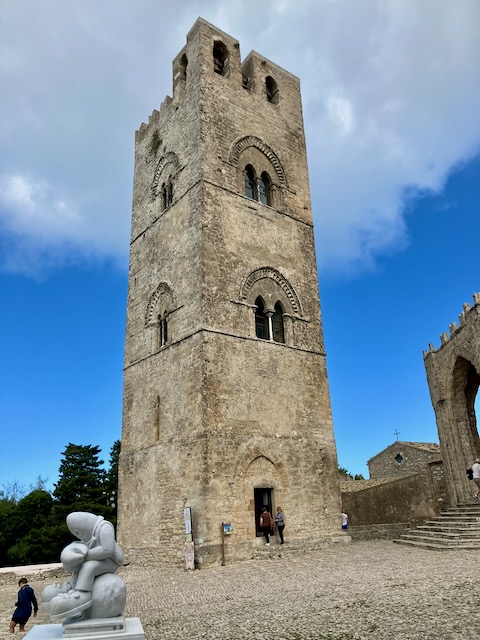

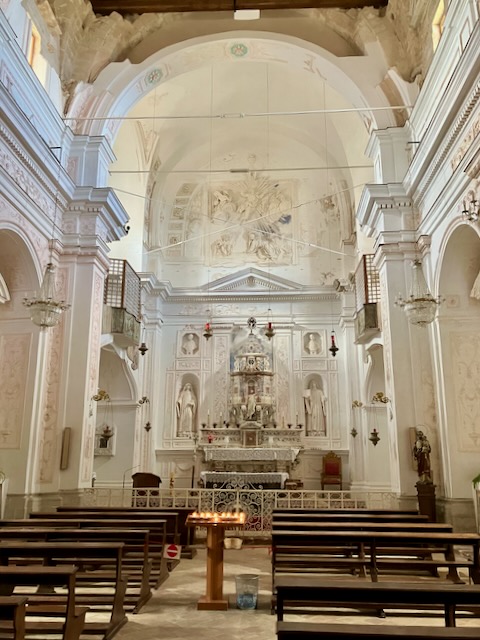
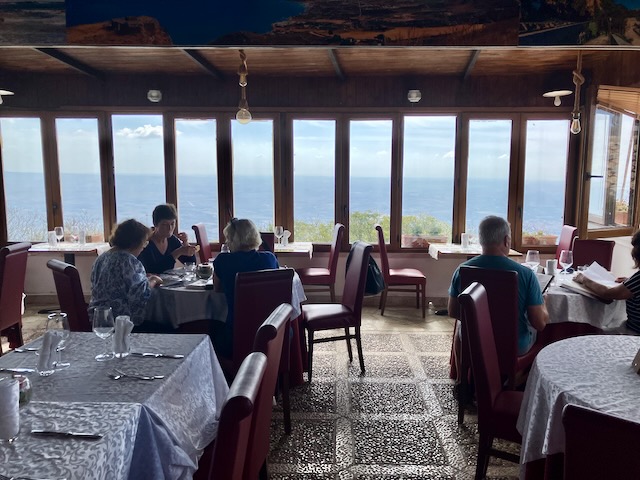
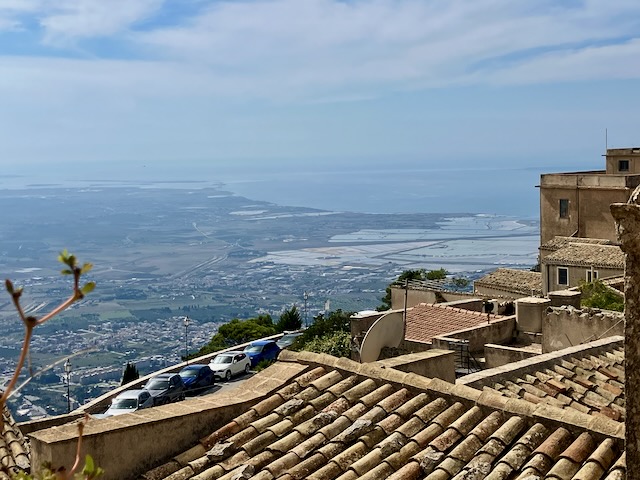

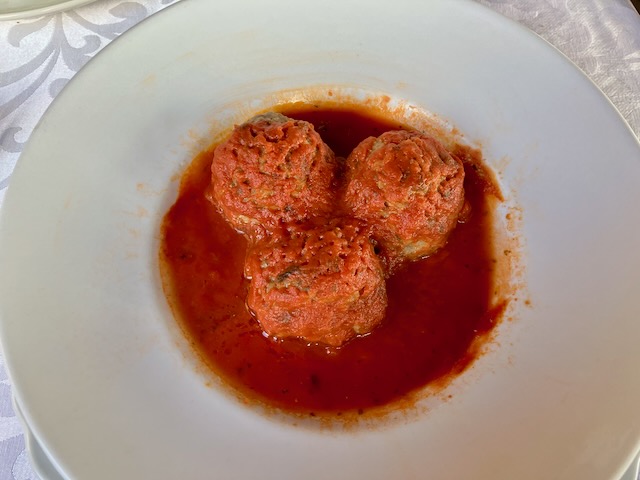
We did finished lunch and met Roberto back at the porta at 2:00. From there we took off back down the mountain, stopping for a photo or two.
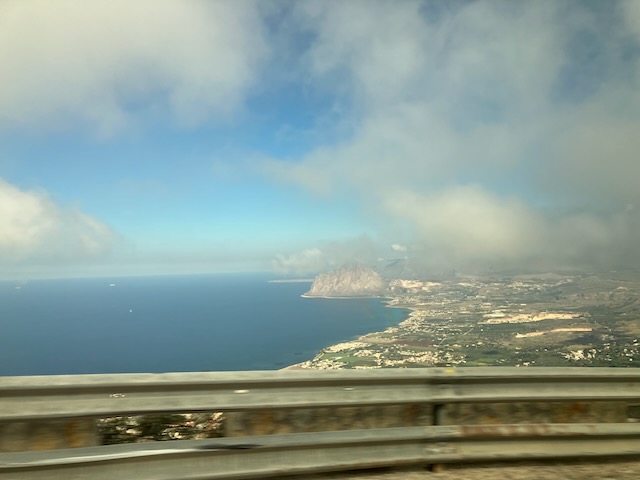
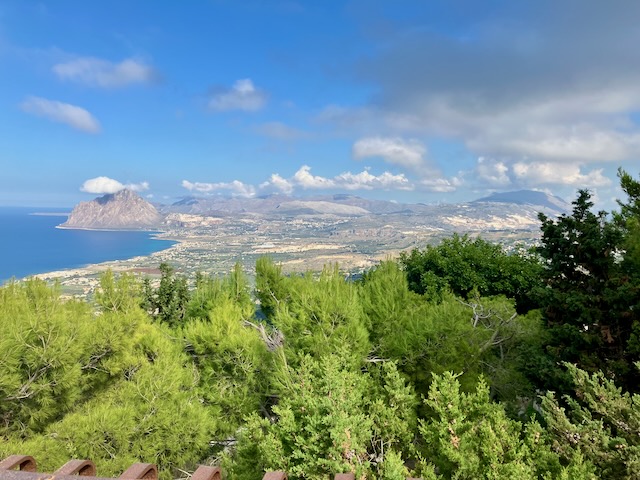

Last stop before heading back to Palermo was the salt flats down closer to Trapani. The salt flats sit close to the water as you would expect, but unlike in the Netherlands, here the seawater is pumped from the sea onto the land in these flat areas, like ponds. There the water evaporates and the world is left with some really good salt. Just before arriving at our stop or turnaround point, we saw probably two dozen flamingos standing in the flats. This act, believe it or not, is how these flamingos gain their pink color. The salt water contains minerals with a pink tint, allegedly from wine, which is absorbed into the flamingos and tints their feathers!

From this turnaround point, we headed back to Palermo, a tad longer ride than getting out here. Once back in town, at the opposite end from where we live, we hiked back to the apartment down Via Roma. A very long day for us and our legs. We slept well that night.
Sunday we made the decision to stay home and rest. We did hit up the supermarket and walked around the neighborhood to get a little fresh air. The weather has been great and for being as close as we are to the water, it seems comfortably dry. As they say here, a domani. until tomorrow.